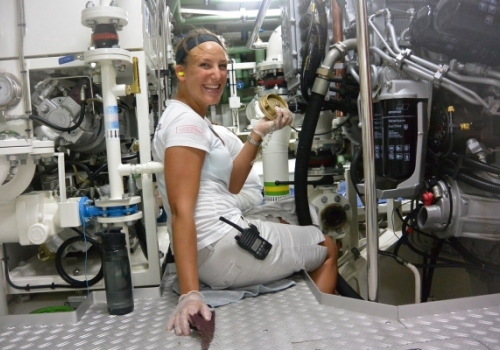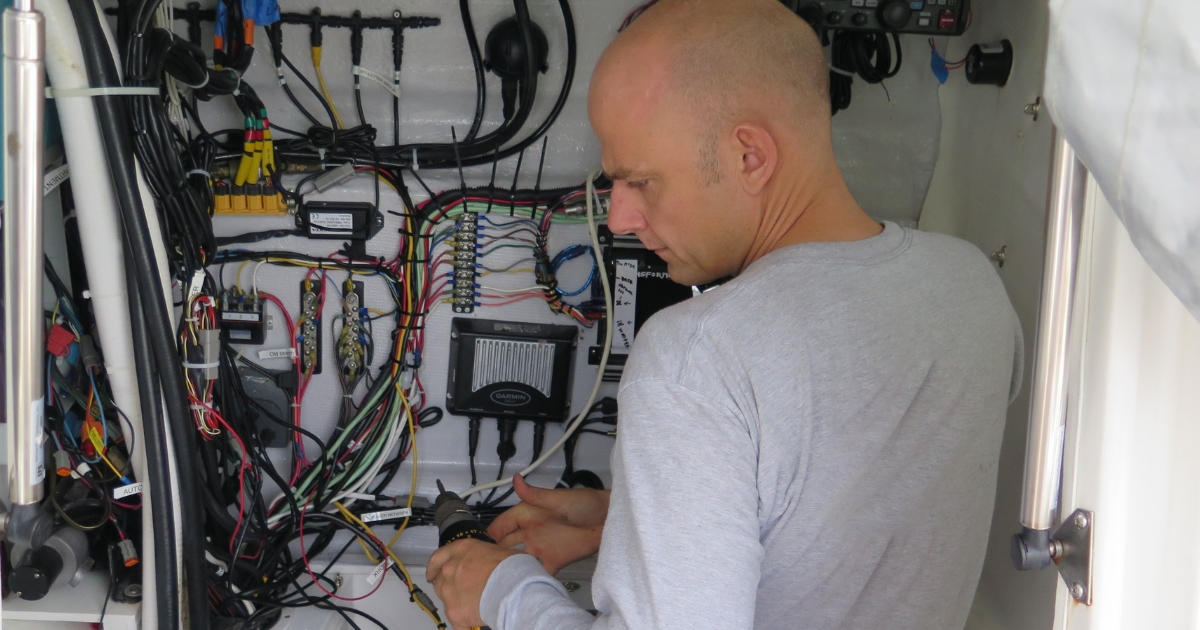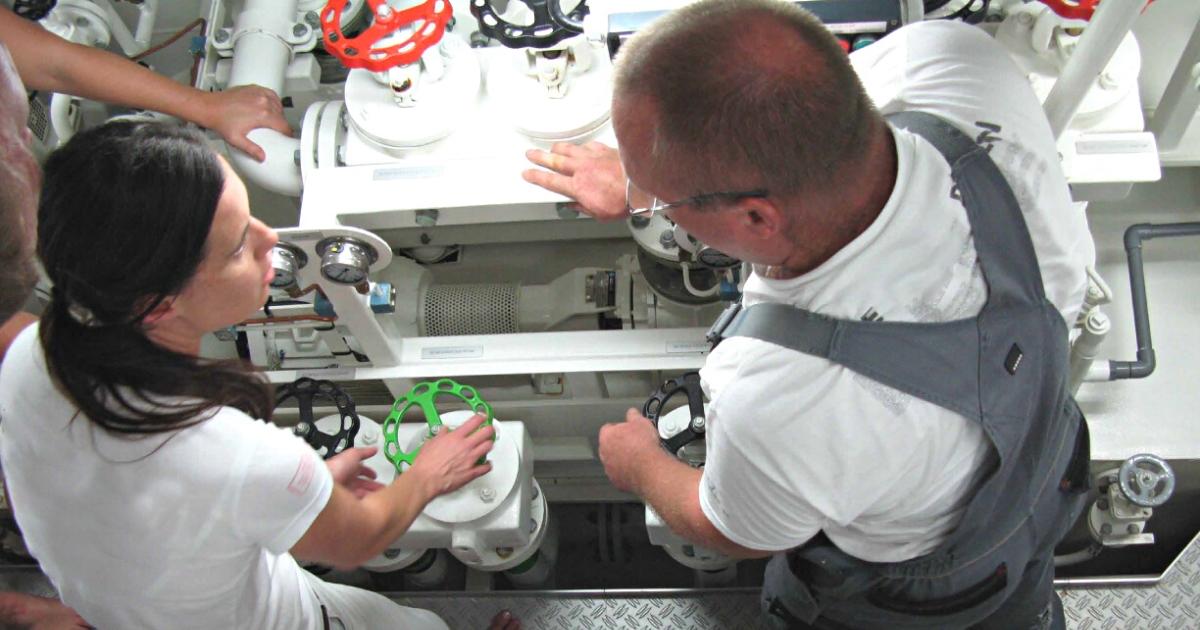The Quick and Easy Guide to Superyacht Engineering Careers

Following on from our guides on superyacht deck and interior careers, it’s time to get our technical hats on and lay out the career pathways for engineering, whether you’re transitioning from another sector or gunning for a chief engineer role.
As always, to keep us on track with the latest training requirements for superyacht engineers, we follow guidance from the experts at the careers guidance platform, Academy by Ephemeris.
What does a superyacht engineer do?
The role of a superyacht engineer varies depending on the size, type and usage of the yacht, and you might be working as a sole engineer, or as part of a team of six or more.
On smaller yachts you will be responsible for the operation, maintenance and repair of all mechanical, electronic, electric, hydraulic, pneumatic systems, and in some instances, also the structural systems and appendages on board.
Notably, on larger yachts there is usually a separation of function between the engineer and the electro-technical officer (ETO) who is responsible for the day-to-day maintenance and operation of all electronic, electrical, communications and audio-visual equipment.
This could include radio, radar, telephones, satellite communications (including internet), navigation systems, email servers, TV, sound systems, and security equipment. We will cover how to get ahead on the superyacht ETO careers pathway in our next article.
How do I become a superyacht engineer?
There are two common routes for becoming a superyacht engineer. Firstly, you can enroll in the courses set out by the Maritime and Coastguard Agency (MCA) and work your way through them from the bottom up. These include the Approved Engine Course (AEC), the Marine Engine Operator License (MEOL), and the Yacht 4, 3, 2 and 1 qualifications (with Yacht 4 being the lowest of the four).
Before taking on the Yacht 4 qualification, candidates must already have the MEOL and AEC certificates, or hold an eligible amount of previous experience in another sector first, after which they can progress through the other levels. This is the ideal route if you are totally new to the industry and don’t yet have any practical experience.
The second route to becoming a superyacht engineer involves gaining a relevant qualification, such as a degree in maritime, aerospace or mechanical engineering, before embarking on your yachting career.
The advantage of this option is that you will have a degree under your belt if you decide to change careers later in life. The disadvantage is that it takes longer and will not necessarily offer you any shortcuts in your training to become a superyacht engineer.
What if I already have relevant experience?
If you already have a large amount of sea-service banked, non-yachting certificates or other relevant employment experience, you can apply to the MCA for a Letter of Initial Assessment.
The MCA will then assess the level at which you can enter the yachting certification process, so you can enroll for the relevant engineering courses, oral exams and ancillary courses to progress in your career.

Which entry level qualifications will I need?
As for all crew working on board, to be a superyacht engineer you need to have completed your STCW basic safety training (a five day course) and have a valid ENG1 medical certificate.
Assuming you follow the standard route into engineering, once you have both the STCW and ENG1, you will need to complete the AEC 1 and 2.
AEC 1 provides students with basic theoretical knowledge, as well as some practical hands-on experience of diesel engines/systems to enable you to meet the MCA’s requirements. This covers the basic operation of engines and their support systems, as well as checks and fault finding.
You can then progress to the AEC 2 course, which covers topics as diverse as refrigeration, legislation (books and records), maintenance systems and techniques, lifting and slinging, safe systems of work, electrical distribution, basic hydraulic systems, fresh water and sewage systems, and much more.
What are the different roles within the engineering pathway?
Although this varies depending on the needs of the individual vessel, the engineering roles on board a superyacht typically range from fourth engineer through to third, second, first and then chief engineer. The key difference between these positions is found in the level of leadership and management responsibility attributed to each role.
Fourth engineer
As the most junior engineering officer on board, the fourth engineer is still learning the ropes, and you will need to demonstrate a willingness to learn and get stuck in straight away in order to succeed in this role. Chances are, you will be splitting your time between phases at sea and phases ashore to attend the courses necessary to progress in your career.
Third engineer
With responsibilities varying from yacht to yacht, the duties of a third engineer are diverse and could include the maintenance of lifeboats, tenders, toys, jet skis and deck equipment such as winches, davits, and hatchways, as well as interior maintenance.
Second engineer
Typically the deputy to the chief engineer, the 2nd engineer has responsibility for the maintenance of the engine room, often taking on more challenging repair and maintenance tasks, as well as supervising more junior crew members.

First engineer
Although not present on all yachts, some of the largest yachts have a 1st engineer who acts as the understudy to the chief engineer. The 1st engineer will take day to day command of the engineering team, including supervising engineering tasks and assigning work as needed. This enables the chief engineer to focus on the vast quantity of paperwork and business management associated with maintaining a large yacht.
Chief engineer
The chief engineer (often a sole engineer on smaller yachts), commands all engineering operations on board and will act as the senior advisor to the captain on all issues relating to the condition and serviceability of the engines, propulsion, ancillaries and interior systems.
Working closely with the captain to always ensure onboard safety, chief engineers are also responsible for maintaining compliance of the yacht’s systems and equipment with relevant laws and regulations to ensure that the vessel passes flag state and other surveys and inspections.
How do I rise up the ranks?
Progressing through the ranks requires you to apply for a certificate of competency (CoC) for each stage.
In order to qualify for the relevant CoC, there are various requirements for each role. These include attaining a certain amount of seagoing service, passing selected examinations (oral and written), and holding the applicable ancillary and safety course certificates.
To discover the level of experience and exact qualifications required for each individual CoC, as well as other useful courses and qualifications to help you stand out from the crowd, visit the Academy by Ephemeris website and explore the engineering pathways.
A spokesperson from Academy by Ephemeris highlights: “The yachting industry is always in need of fantastic, tech savvy engineers. It is a fulfilling, challenging and stimulating career, and we are delighted to have helped scores of enthusiastic candidates to achieve their career goals by following the guidance laid out on our platform.”


Post your comment
You cannot post comments until you have logged in.
Login to post a commentComments
No one has commented on this page yet.
RSS feed for comments on this page | RSS feed for all comments